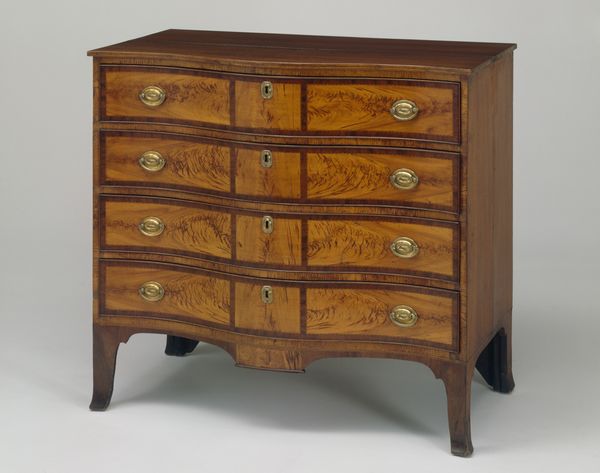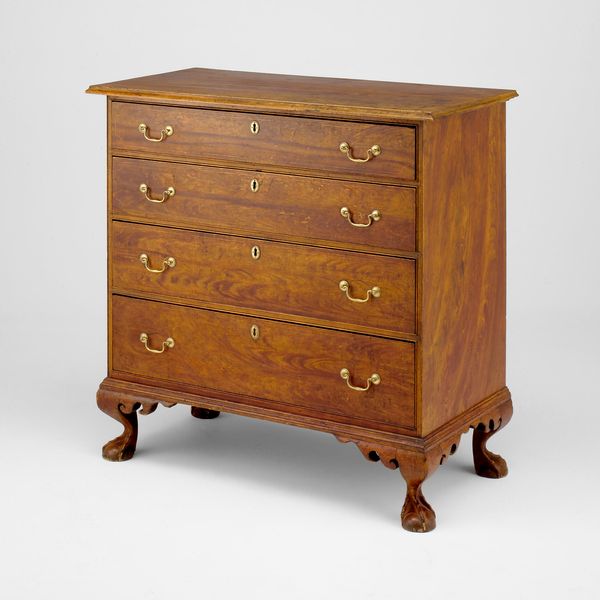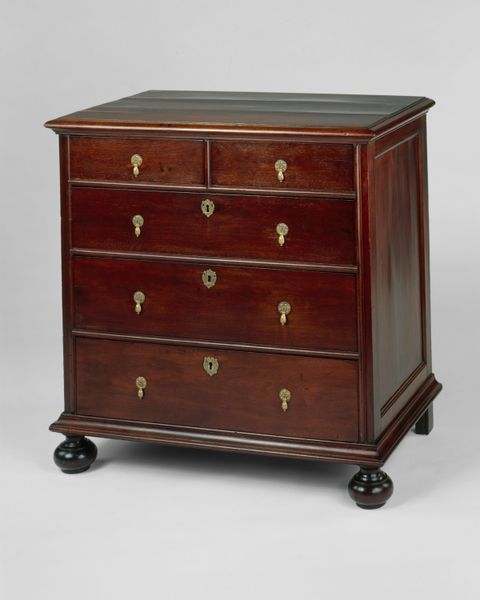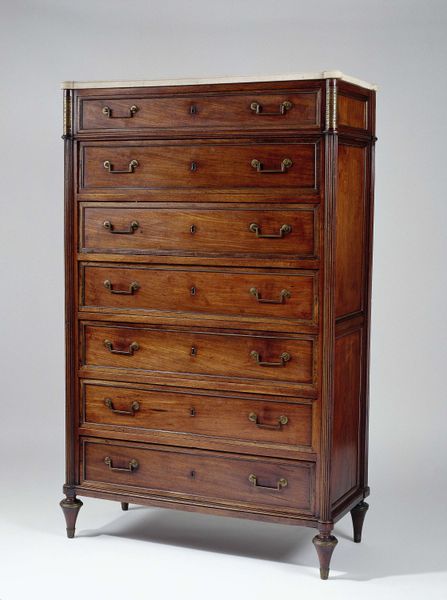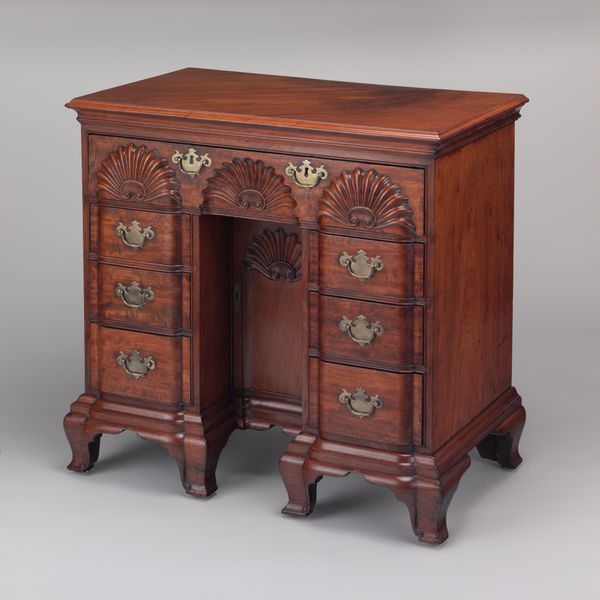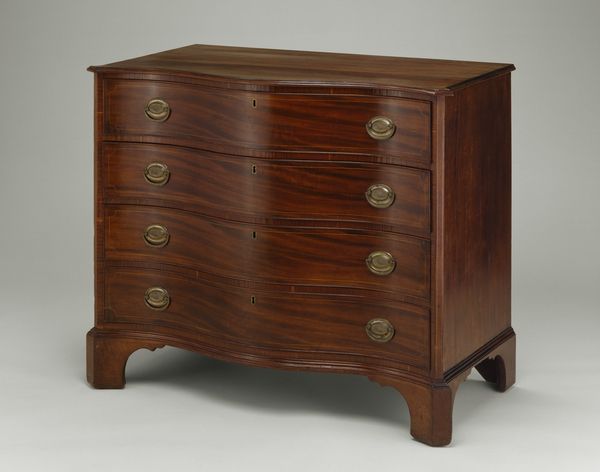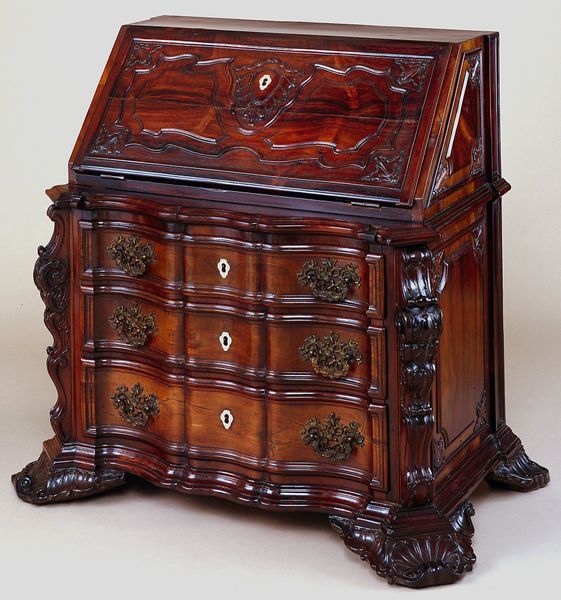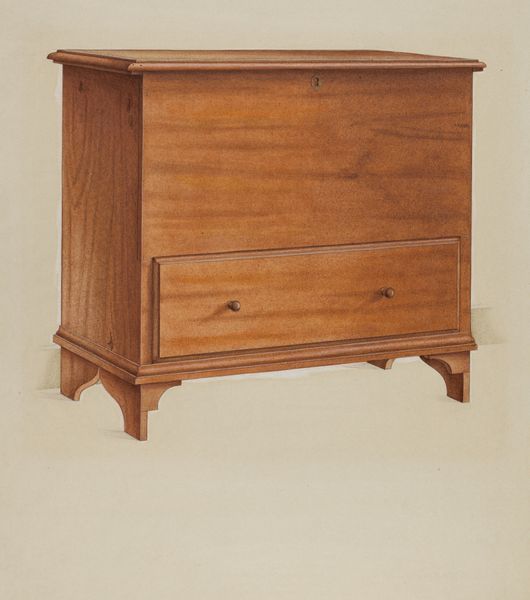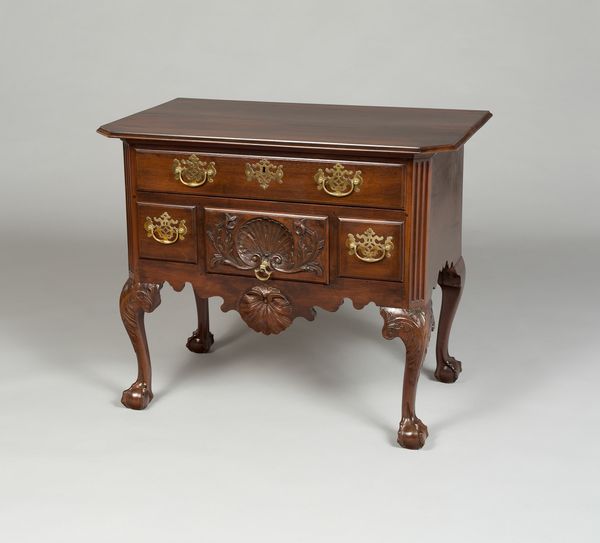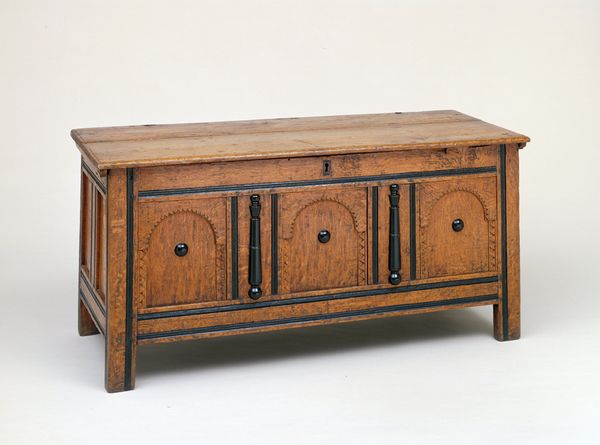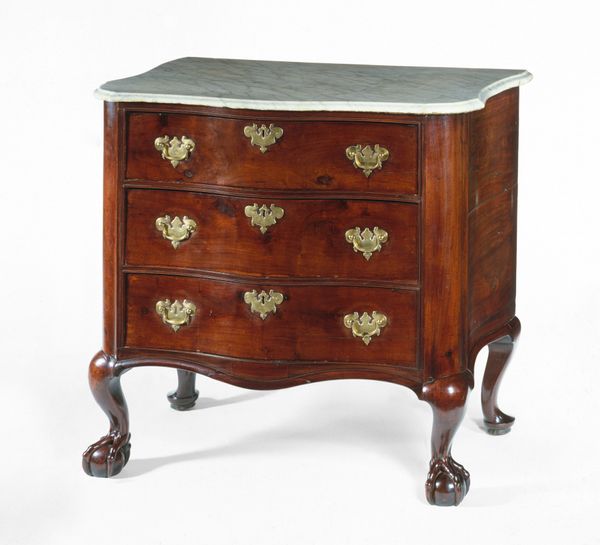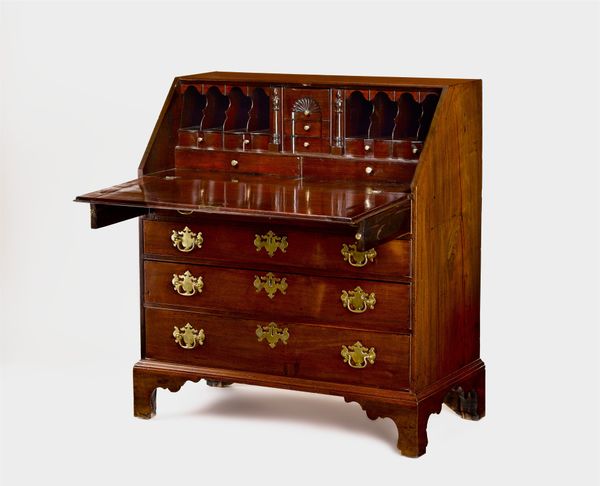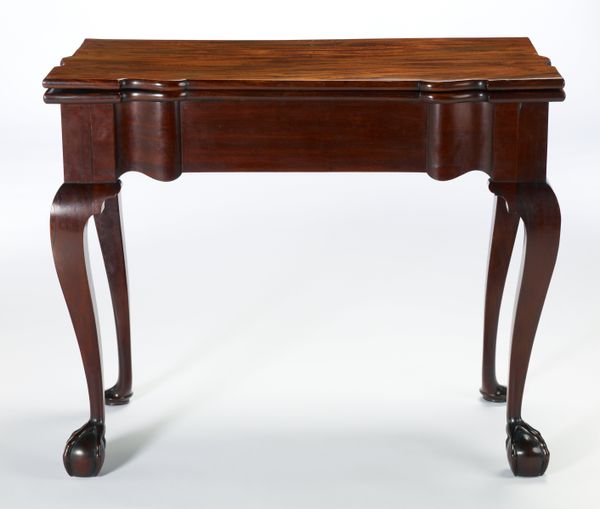
#
simple decoration style
#
natural stone pattern
#
wood texture
#
pottery
#
furniture
#
animal print
#
wood background
#
shelf placement
#
stoneware
#
wooden interior design
#
wooden texture
#
united-states
Dimensions: 43 1/2 x 47 x 23 1/4 in. (110.49 x 119.38 x 59.06 cm)
Copyright: Public Domain
Curator: This chest of drawers, dating from around 1825, resides here at the Minneapolis Institute of Art. Editor: It’s remarkably poised, isn’t it? The way those columnar supports frame the bowed front, anchoring what could otherwise be a much lighter, even frivolous piece. Curator: Precisely! This aesthetic speaks to the cultural aspirations of the era. Consider the Greek Revival sweeping America at this time. The chest reflects that ambition of refinement. Homes were increasingly becoming stages to present your family's achievements and social standing. Editor: You can see this classical influence expressed in the flanking columns. What grabs me, however, are the sinuous curves of the drawers themselves. They introduce this playful asymmetry into an otherwise rigorous structure. What do you think? Curator: Absolutely! The convex drawers also showcase a mastery of woodworking techniques. A piece like this, while seemingly simple in its decoration style, signaled economic capability. The curves, the subtle wood grain, the dark, thin band outlining each drawer… This piece almost begs us to imagine its place in a well-appointed parlor. Editor: The subtle grain is stunning. Note how the craftsman arranged it to enhance the piece's dimensionality. I think this chest really exemplifies how an object can be both functional and symbolic. Curator: Indeed. Imagine this not only as furniture, but also as a vessel filled with meaning and history. Whose clothes were stored here? Whose letters were hidden in those drawers? We only have hints through formal elements and an approximate date. Editor: Well, I leave with a renewed appreciation for how line and form can speak across time. Curator: As do I. It's in these everyday items where history is not just recorded, but lived.
Comments
minneapolisinstituteofart about 2 years ago
⋮
Chests of drawers with bowed fronts flanked by caryatid figures or columns, such as this one, are often attributed to the Philadelphia area, where a significant number are known to have been owned and made. The form reflects a strong influence from the French Empire, or Neoclassical style. This example differs from most in that it is made of maple with rosewood details, more commonly found on Biedermeier style furniture made at this time in and around Germany. Another unusal element of this chest is the survival of the painted decoration on its columns, sides, and drawer fronts, as well as its original rosewood drawer knobs.
Join the conversation
Join millions of artists and users on Artera today and experience the ultimate creative platform.
